Name Eugenia Falleni | Died 1938, Sydney, Australia | |
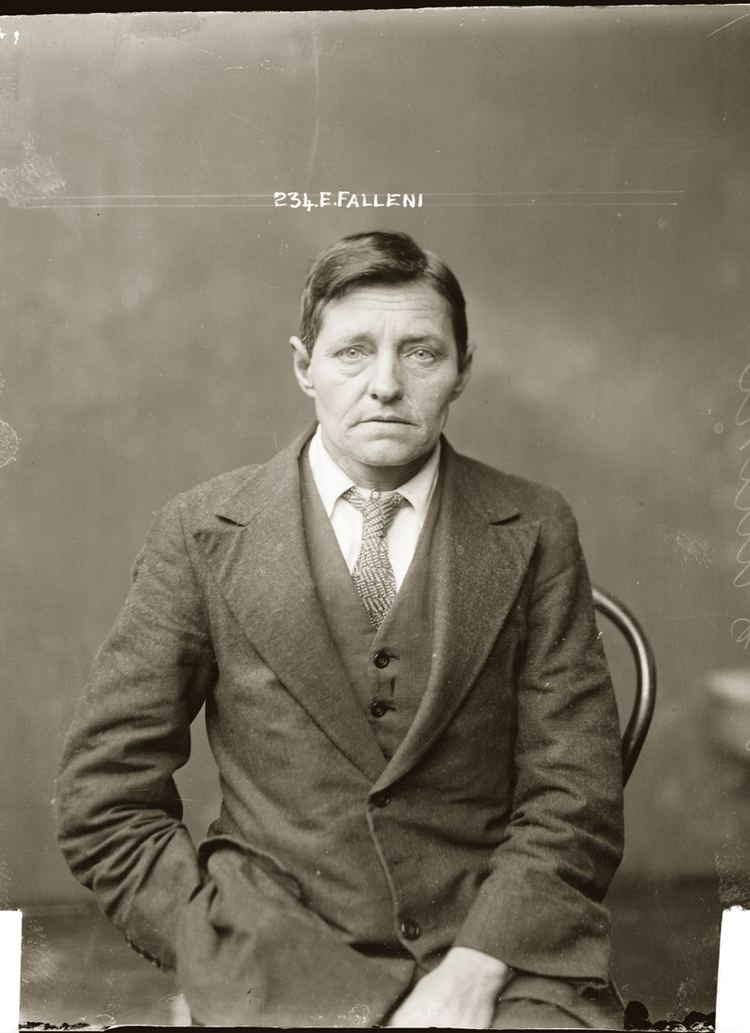 | ||
Eugenia falleni a true story of adversity tragedy crime and courage by mark tedeschi
Eugene Falleni (25 July 1875 – 10 June 1938) (born Eugenia Falleni, also known as Harry Leo Crawford and Jean Ford) was a female-to-male transgender man convicted of murder.
Contents
- Eugenia falleni a true story of adversity tragedy crime and courage by mark tedeschi
- Eugenia falleni
- Early life
- Australia and marriage
- Birketts death second marriage and arrest
- Murder trial later life and death
- Legacy
- References
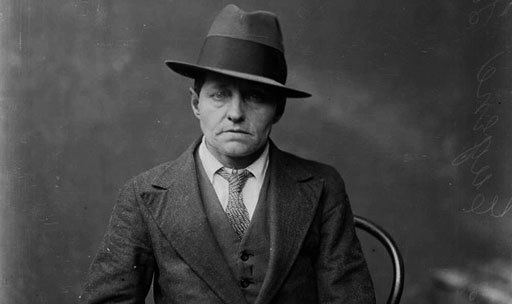
Eugenia falleni
Early life
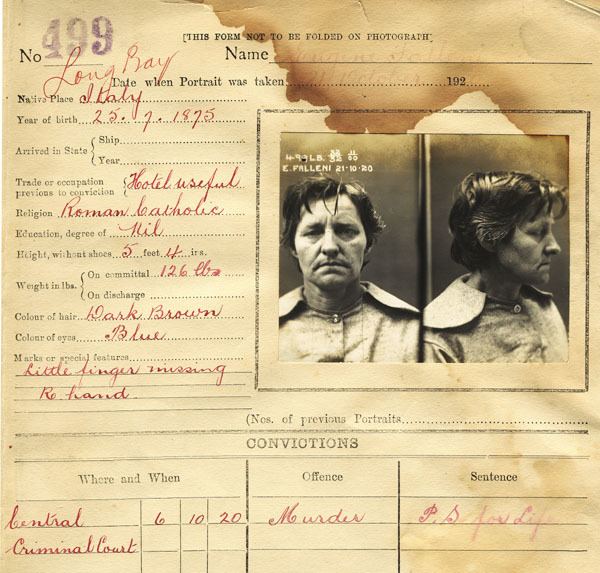
Born near Livorno, Italy (according to family accounts), or Florence, Falleni was the eldest of 22 children, of whom seventeen (ten boys and seven girls) survived. Falleni migrated with his family to Wellington in New Zealand circa 1877, aged about two. His father, a stern disciplinarian, worked as a carrier with a horse and cart and as a fisherman, among other occupations, and Eugenia, after repeatedly dressing in male attire to obtain work in brickyards and stables during his teenage years, left home in the guise of a cabin boy and began calling himself Eugene Falleni. Falleni's family made little effort to find him after years of being hostile and opposed to his behaviour. Falleni was also reported to have been married to a Martello Falleni before arriving in Sydney.
Australia and marriage
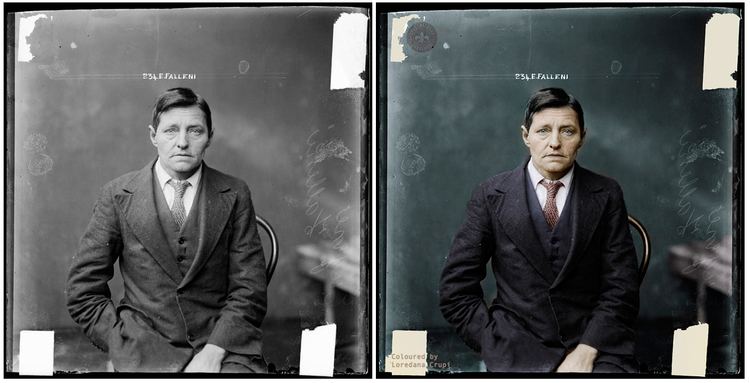
After a few years at sea, by his own account his sex assigned at birth was discovered on board after a drunken conversation with the ship's captain. They had been talking in Italian when Falleni inadvertently stated that his grandmother referred to him as a 'piccolina' the feminine version of 'piccolino' meaning little one. Despite his best efforts, Falleni failed to alleviate the captain's suspicions as to his sex assigned at birth. Falleni soon found that he was being ostracized by the other crew members and he became the victim of repeated rapes by the ship's captain. As having a woman on board a ship was traditionally viewed as an invitation to bad luck, Falleni was put ashore pregnant and destitute in 1898 at the ship's next point of call in Newcastle, Australia.
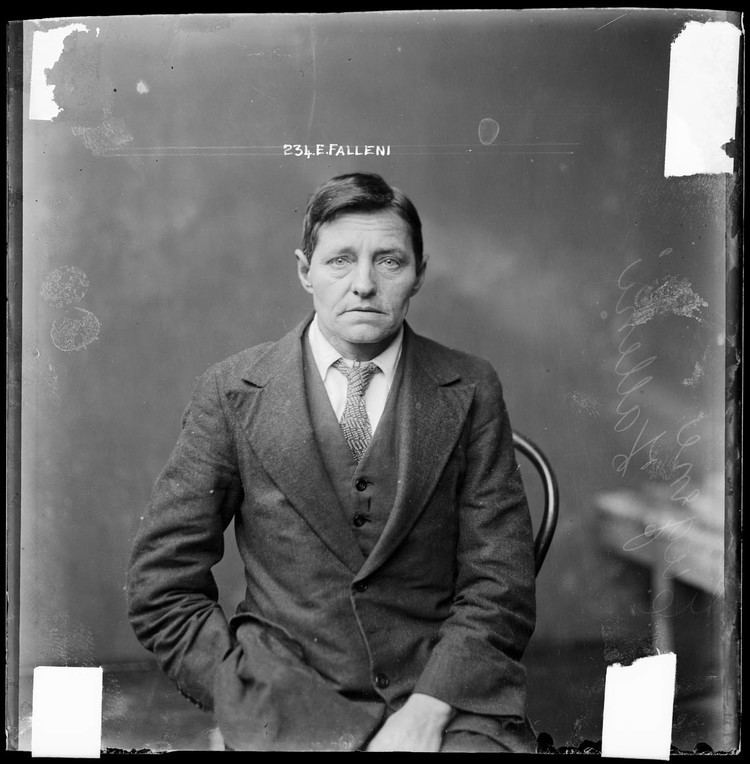
In the same year he gave birth to a daughter, Josephine Crawford Falleni, in Sydney, and put the child into the care of an Italian-born woman, Mrs. de Angeles, in Double Bay. He soon took on the male identity as ‘Harry Leo Crawford’, of Scots descent, visiting his daughter only infrequently. Josephine called Mrs. de Angeles 'Granny' and later recalled that 'Granny' told her that her father was a sea captain.
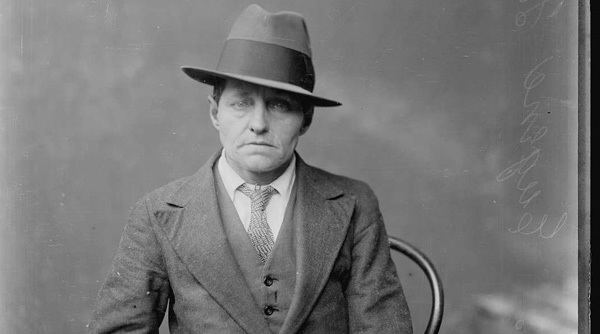
After a series of manual jobs in meatworks, pubs and in a rubber factory, in 1912, Falleni entered the employ of a Dr G. R. C. Clarke in Wahroonga, Northern Sydney, as a general useful and sulky driver. It was there that he met Dr Clarke's beautiful housekeeper Annie Birkett, who had been widowed several years before and left with a 13-year-old son to support. To Annie, Crawford was a handsome man who paid her vast amounts of attention whilst ignoring the advances of the other female staff.
Annie and her son left for Balmain where Annie used some money she had to set up a confectionery shop. Falleni followed her there and took an interest in the business. On 19 February 1913, after a brief courtship, Crawford went through a marriage ceremony with Annie at the Methodist Parsonage in inner city Balmain. Soon after their marriage the couple moved to Drummoyne where Falleni worked in hotels and factories at various kinds of work. Witnesses, including Falleni, claimed Annie was not aware her husband was not cisgender male until close to her death.
Birkett's death, second marriage and arrest
In 1917 Annie was told by a neighbour that Falleni was assigned female at birth. She confronted Falleni about it and he refused to confirm his assigned sex, fearing that Annie would tell the police and have him arrested. Soon after this time it appears that Annie resolved to end the marriage whilst Falleni hoped that the marriage would continue.
On 1 October 1917 Annie suggested that the two of them have a picnic near Lane Cove River. According to Falleni's later statement to the police, the two of them soon quarreled after Annie revealed her intention to leave as she could not continue the marriage with the knowledge that her husband was assigned female at birth. According to Falleni, at some point during the argument Annie slipped and fell backwards hitting her head on a rock and losing consciousness. Despite his best efforts, Annie died within minutes and a distraught Falleni panicked over what to do with Annie's body. There were no witnesses to Annie's fall. Falleni resolved at that point to dispose of Annie's body, choosing to burn it with the aim of making it unidentifiable. He feared that if Annie's body was identified, he would be arrested and his assigned sex would be revealed.
Annie's body was discovered in scrub land, off Mowbray Road, Chatswood, in October 1917. The Government Medical Officer, Dr. Palmer, informed the City Coroner that:
"...the body was much charred. No definite marks of violence were found, and the stomach contained much food. There was no smell of alcohol, and the organs of the body were in a healthy condition. Death had occurred... probably due to burns."
Annie's body was not identified. Newspaper accounts were soon reporting that the Police had decided against murder and believed it to be a case of suicide based on accounts of a woman 'whose manner has been regarded as strange' being recently seen in the area and the discovery of a small bottle of kerosene. Ultimately, an open verdict was returned at the inquest and the remains were buried in a coffin marked 'The body of an unknown woman' at Rookwood Cemetery.
When Annie's son asked Falleni about his mother's absence, Falleni replied that she had run off with another man. A witness at the later trial also claimed Falleni had told them Annie had 'cleared out'.
In 1919 Falleni met Elizabeth King Allison, known as Lizzie, and fell in love despite his belief that he would never fall in love again. They married at Canterbury in September 1919 with Falleni giving his name as Harry Leo Crawford, place of birth as Scotland and his occupation as mechanical engineer. It was later noted in Court that Lizzie was over fifty years of age at the time.
After his mother's disappearance, Annie's son took up lodgings at Woolloomooloo. In 1920, he visited his Aunt and, 'told her things which led to an interview with the Police'. He was later reported to have said that after returning from a holiday weekend, and finding his mother missing, he was subsequently taken by Falleni to the notorious suicide spot The Gap where he threw stones off the cliff. At night, about a week later, Falleni took him to scrub land near Manning Road, Double bay, and asked him to dig a hole. He did and they returned to the city.
Falleni was arrested at a hotel on the corner of Parramatta Road and Johnston Street, Annandale on 5 July 1920. At the time of his arrest he asked to be placed in the women's cells He had been living with Lizzie in a house in Stanmore but requested that his wife be not apprised that he was not a cisgender male. Among male clothing in a locked leather suitcase, police located an ‘article’, later exhibited in court, made of wood and rubber bound with cloth in the shape of a phallus or dildo.
A large crowd was in attendance when Falleni was remanded at the Central Police Court on the charge of murder and Falleni's lawyer, Maddocks Cohen, did not apply for bail. A newspaper described the accused:
"The accused woman is strangely interesting. She bore an extraordinary resemblance to a man, for facially she is masculine. She wore a man's clothes. While in the docks she appeared distinctly nervous. She wears a gold band ring on the little finger, and she "fiddled" with the dock rail. In her right hand, she carried a grey felt hat. her hair is almost black and clipped short. It was neatly brushed and parted on the left side of her head. Her face is remarkedly small, especially around the mouth. Her face is considerably wrinkled, and suggests that she is older than her stated 43. Her clothing consisted of a well-worn dark-grey cloth sac suit, white tennis shirt, and a neatly-tied green Broadway tie. Her well-polished boots were of patent leather."
After Falleni's arrest and remand, on 8 July 1920, the Inspector-General of Police 'took the necessary steps to bring about the exhumation' of Annie Birkett's remains. Annie's son, who worked in a tailor's shop, was said to be still assisting Police who considered him 'a bright and intelligent lad'. Meanwhile, Falleni's wife Lizzie was quoted in the media as stating that Falleni was 'an ideal husband' and they had 'a very happy married life' but that since the arrest she had been 'so pestered by calls and sensation seekers' she'd been forced to move house.
By mid-July, Falleni's daughter was located and had given 'an interesting statement' to Police, and a warrant had been issued for the exhumation of Annie Birkett's remains. The second post-mortem, including x-rays, did not reveal any new information and Annie's body was released to her family for burial at Woronora on 24 July 1920.
Murder trial, later life and death
At the committal hearing in August 1920, witnesses included the dentist who made the false teeth found with Annie Birkett's remains and Birkett's sister, Lillie Nugent, who also identified the gemstone found with the body as belonging to Annie. Annie's son gave evidence that his mother had only married Falleni because he was so persistent and after that 'there were always rows and they were never happy'. He mentioned them leaving for his Aunt's, then another location, and how much Falleni 'worried' his mother and an incident when Falleni found them and 'smashed up everything'. He expanded on his story of his trip with Falleni to The Gap and said that Falleni had gone through the fence to the cliff edge and wanted him to as well but he wouldn't as Falleni 'never seemed to like' him and on this occasion 'his manner was more unpleasant'. Falleni's lawyer, Maddocks Cohen, objected to his evidence about being taken to dig holes in the scrub but the magistrate allowed it on the grounds that it indicated Falleni's frame of mind. The Government Medical Officer, Dr Palmer, repeated his testimony from the post-mortem that he believed the deceased died of burns and was alive when the fire began, due to blistering on the skin, but he could not say if she was conscious or not. He also stated that small cracks to the skull were likely a result of the fire but a more substantial one could have been evidence of violence. Henrietta Schieblich, who rented Falleni a room after Annie's death, said Falleni had told her his wife had left him and added 'We had a jolly good row, and I gave her a crack on the head, and she cleared'. She also claimed Falleni had said he was going to kill Annie's son on the night he took him to dig holes in the scrub. Another witness supported Annie's son's evidence that Falleni, who couldn't read or write, had asked others to look for mentions of a murder in the newspapers in the weeks after Annie's disappearance.
The prosecutor was given permission to treat Falleni's daughter Josephine as a hostile witness and submitted her earlier sworn statement to police as evidence:
"I first remember my mother when about seven years of age. She always wore men's clothing, and was known as Harry Crawford. I was brought up at Double Bay by Mrs. de Angeles, whom I used to call 'Granny.' Granny told me that Harry Crawford was my mother, and that my father was the captain of a boat. My mother was very cruel to me when I was a child, and often forgot me. Granny told me that my mother tried to smother me when I was a baby. Mrs. de Angeles died when I was about 12 years of age, and my mother took me to a little confectionery shop in Balmain, kept by a Mrs. Birkett, who had a son named Harry. My mother told me Mrs. Birkett had some money, and always thought my mother was a man. I said to my mother, 'She'll find you out one of these days.' My mother replied, 'Oh, I'll watch it. I would rather do away with myself than let the police find anything about me.' My mother told me always to call her father, and not let Mrs. Birkett nor anyone else know that she was a woman. I did not know that my mother was married to Mrs. Birkett, but they occupied the same bed-room. They quarrelled a great deal, and mother used to come out and say, 'More rows over you. I cannot get any sleep.' I replied to my mother, and she said, 'Oh, a lovely daughter I've got.' I said, 'What can you expect? A lovely mother I've got.' In 1917 I met my mother, who told me everything was unsettled and upside down, as Mrs. Birkett had discovered she was a woman. My mother seemed very agitated, and was always reticent about herself."
At the end of the hearing Falleni was committed for trial and refused bail. A few days after the committal hearing, the magistrate, Mr. Gale, was criticised in a Sydney newspaper for personally escorting into the courtroom, and providing 'box seats' for, a popular actor and actress.
At Falleni's trial for murder at Darlinghurst courthouse in October 1920, the ‘Man-Woman case’ created a press sensation, with the accused appearing in the dock first in a man's suit and then in women's clothes. The Crown case followed the evidence presented at the committal, although the Prosecutor was reticent when 'referring to the relations between the accused and the deceased' because 'there were some matters to which he did not care to refer to in the presence of women'. He was rebuked by the presiding Chief Justice, Sir William Cullen, who responded that 'if women came to a Criminal Court they must not be considered for a moment'. The Prosecutor then concluded with information that he said demonstrated the accused 'was so practical in deceit' as to be able to convince two women 'for years' that he was a cisgender male. Only described as 'an article' at the time, later newspaper accounts report the Police search of the home Falleni shared with Lizzie in Stanmore, and the discovery of a dildo in a bag belonging to Falleni. The exchange between Falleni and the Police detective was repeated in Court:
"[Falleni] said: 'You will find it, something there that I have been using.'
Detective: 'What is it, something artificial?'
[Falleni] replied: 'Yes, don't let her see it.'
Detective: 'Do you mean to say that she doesn't know anything about this?'
[Falleni]Evidence from other witnesses did not always support the Crown's case. While on his way to work, David Lowe saw a woman with a suitcase behaving in a 'half-witted' way, who disappeared into the scrub 200 yards from where the burned remains were found. And Police-Inspector Mayes was one of those, at the original inquest, who suggested the body may have been of a woman who set herself on fire accidentally.
Falleni pleaded not guilty to the murder, but the Jury only took two hours to reach their verdict, and he was convicted and condemned to death,. Asked by the Chief Justice if he had anything to say, Falleni consulted with attorney, before replying: " 'I have been three months in Long Bay Gaol. I am near to a nervous breakdown. I am not guilty, your Honor. I know nothing whatsoever of this charge. It is only through false evidence that I have been convicted."
In mid-October Falleni lodged an appeal against the conviction, the basis of which was:
"...that the jury's verdict was against evidence, that the evidence tendered by the Crown was weak and merely circumstantial; that the case against the accused set up by the Crown was destroyed by the evidence of the Crown's medical witnesses; that the identification of the appellant with some person alleged by the Crown to have been seen in the neighbourhood of the place where a charred body was found was unsatisfactory, and that owing to nervous prostration at the trial, the appellant was physically unable to make a statement of facts, which would have answered the circumstantial evidence..."
The Court of Criminal Appeal dismissed the case finding that if the original jury 'came to the conclusion that the accused was the person who had brought about the death of the woman, no matter by what means, it was justified in finding a verdict of guilty'.
Falleni's sentence was commuted to imprisonment for life but his alleged immorality in passing as a cisgender male was made much of in the popular press, which portrayed him as a monster and a pervert.
Friends of Falleni and 'prison reform workers' petitioned 'on several occasions' for his release and in February, 1931, reportedly following an hour-long visit with the prisoner, Mr. Lamaro, the Minister for Justice granted him freedom on the basis that he was nearly sixty years old and 'not of robust health'. Upon leaving Long Bay Prison, Falleni was taken by car 'for an unknown destination'. In the Evening News questions were again raised about the case such as there being no certainty that the body was Birkett's, the skull fractures and the effect of the fire, the possibility of poison and the lack of 'definite evidence that Falleni had taken the woman's life'.
In April 1935, when Inspector Stuart Robson gave a speech upon taking on the role of officer in charge of the Broken Hill Police District, he recalled his involvement with the Falleni case:
"I was also responsible for the arrest of Eugenia Falleni, the famous man-woman. She was the child of an Italian skipper and he dressed her in male clothes and she worked as a cabin boy. She kept to male attire, and her exploits are well known. She was convicted for the murder of her 'wife,' and was sentenced to life imprisonment. I arrested her when she was working as a man, breaking down rum in a Sydney hotel cellar. That was three years after the murder. I thought I had arrested a man, and it was not until she declined to undress that I thought there was something wrong. A doctor made the discovery. She was subsequently released and has completely disappeared."
Falleni had assumed the name "Mrs. Jean Ford" and became the proprietor of a boarding house in Paddington, Sydney. On 9 June 1938 he stepped off the pavement in front of a motorcar in nearby Oxford Street and was struck by it, and died of his injuries the following day in Sydney Hospital. he was only identified through fingerprint records and the £100 she gained from the sale of the boarding house business, just before the accident, was found in his bag. The inquest returned a verdict of accidental death. Falleni's funeral notice was announced under his final name and he was buried in the Church of England section of Rookwood Cemetery.
Legacy
In the intervening years, after the publication by the press and popular crime writers of a large amount of speculation and various contradictory accounts of his life (many of them propagated by Falleni himself, who had grown up believing that impersonating a man was a criminal offense), the case was largely forgotten until the appearance of a detailed biography of Falleni by Suzanne Falkiner in 1988, after which his story was taken up in Australia by a number of artists, playwrights and short film makers, museum and photography curators, and academics with an interest in gender studies. In 2012, Mark Tedeschi QC wrote a conjectural or partly fictionalised biography of Falleni, entitled Eugenia Falleni (Simon and Schuster, 2012). A new edition of Falkiner's book, Eugenia: A Man, summarising new information, was published in 2014.
A play based on the life of Falleni by New Zealand playwright Lorae Parry premiered in the United States at the State University of New York at New Paltz on March 1, 2012.
